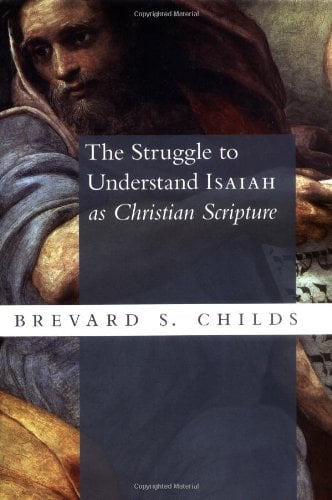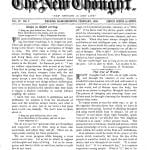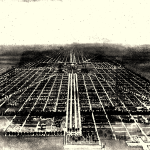It would be hard to over estimate the significance of Jerome (345-420 A.D.) when it comes to the establishing of Christian commentating on the Bible, including on Isaiah. Ironically, despite all his erudition and thorough knowledge of Hebrew and Greek, it is his translation of the Bible into Latin, the so-called Vulgate (done between 391 and 404 and largely based on the Hebrew text of the OT), which is to say a move away from any of the Biblical languages, which has had the biggest impact on the church in the long term. Latin became the language of the Western church and of Scripture for over 1,000 years thereafter. This influence was felt well into the 20th century. When my wife, raised Catholic, was a child. The mass was still in Latin! In fact it did not officially become optional until November 1971.
Only late in life, between 408 and 410 did Jerome turn to writing a commentary on Isaiah. He died a decade later. Jerome begins his scholarly career as something of a disciple of Origen, but by the end he was attacking Origen’s views of various things. His approach to the Biblical text is rightly described by Childs as eclectic, because he studied with both Alexandrians and Antiochians, including the Cappadocians, and so he benefited from both schools of interpretation.
The Isaiah commentary proved to be Jerome’s longest, not least because he saw it as a sort of Gospel, addressing all the mysteries of the Christian faith, including all the aspects of Christ’s life and ministry. He believes one needs to affirm and understand both the historical and spiritual sense of the text but he emphasized that the central function of interpretation is to get at the historical meaning of the text. But by literal, Jerome often means that the prophecies in Isaiah are literal predictions of NT events, especially Gospel events. ‘However, Jerome is very critical of Christian commentators (e.g. Clement) and the millenarians who neglect a passage’s historical moorings and project a heavenly scene of the last days”.
Because of his considerable linguistic abilities, Jerome is able to begin his commentary on each section of Isaiah with a fresh translation of the Hebrew text which he prefers (and he denies that Jews have deliberate distorted the text, in fact drawing on the work of Jewish exegetes) but he holds the LXX in high regard, and he exploits the differences between the versions, regularly commenting on the differences. For example, in dealing with the hardening passage in Is. 6.9 he notes that the Greek uses the indicative mood, thus foretelling the future rejection of the Gospel by Jews, whereas the Hebrew has the imperative indicating God’s command is the cause of the hardening.
Jerome shows a willingness to recognize and accept the ambiguity of the Hebrew. Is. 6.6 can be read to refer to the angels covering God’s face or their own. Is. 16.1 can be read to refer to a ruling lamb or a lamb of the ruler. But when a major doctrinal point is at stake, for instance in Is. 7.14, Jerome brings out his full linguistic arsenal to demonstrate that the Jews are wrong about almah. It doesn’t just mean young woman or even merely virgin but rather ‘hidden away virgin’ of marriageable age, that is a ‘kept young woman’. He plays on the fact that the word in question can mean both nubile and concealed. Jerome had a great interest in the historical particularities of the Biblical text— its geographical references, its names, its animals, its agricultural practices and he often pursues and tracks down the meaning of obscure historical terms. While he often focuses on the historical background of an OT text, including the prophecies, his default assumption is that the full context cannot be recognized without the use of the NT. OT prophecy is fulfilled in NT realities. So for example the prophecy of judgment on Jerusalem in Is. 3 is seen as fulfilled by the Romans in A.D. 70 rather than the Babylonians in the sixth century B.C. and indeed Is. 6.11-13 is not only fulfilled by Titus but again fifty years later by Hadrian, or Is. 40 is immediately identified with the ministry of John the Baptizer. Basically the NT provides the spiritual meaning and sense of the OT prophetic text whereas the OT provides the historical sense. The hardening of Israel mentioned in Is. 6 is used by Jerome to explain why Jewish exegetes can’t move beyond the historical or carnal sense of the OT text. Sometimes his focus on the spiritual or figurative sense of the text leads to pure allegory based on etymology, so for example when he turns to Is. 15, the prophecy against Moab, in his Isaiah commentary, he trots out the view that ‘Nebo’ means prophecy, ‘Medeba’ means forest, ‘Heshbon’ means knowledge, ‘Elealeh’ means ‘ascension’ and so on. He makes not attempt to link the figurative allegorical sense with the literal sense in this exposition. But he is aware of the difficulties of linking the two senses and seeing their continuity.
Childs attributes to Jerome the accomplishment of forcing Christian interpreters to have to deal with the literal or historical meaning of the text first before jumping to the spiritual or allegorical sense of the text. Perhaps it could be said that Origen at times and Eusebius at times also made clear that the historical sense should not be neglected. It is a long way from Clement to Eusebius in terms of approach to the text. As Childs notes, sadly even Jerome, for all his dependence on Jewish helpers and exegetes seldom recognizes in the Jews of the OT signs of genuine faith (see his exegesis of Is. 53.1ff). The Old Covenant is not viewed as a faithful witness to God in its own right, but only a foreshadowing of the NT and the salvation that comes from Christ. It is not really until we get to Augustine (Of Christian Doctrine) that a sophisticated treatment of the relationship and linkage between the literal and figurative senses of the text is brought forth. Childs attributes to Jerome a lack of understanding of Biblical eschatology. I think this complaint is mostly fair since regularly Jerome interprets texts like Is. 11.6-9 not to refer to the final eschatological state, but rather to the harmony that exists within the church between rich and poor, powerful and humble. Childs adds “without a multifaceted understanding of the intersection of the divine and human within an unfolding divine drama, he was left with a flat, empirical history as a form of chronicle and a non-historical realm of spiritual truths that float above the ‘real’ history of the world.” This same complaint of course could be made of much Christian preaching and inductive Bible study today as well.












